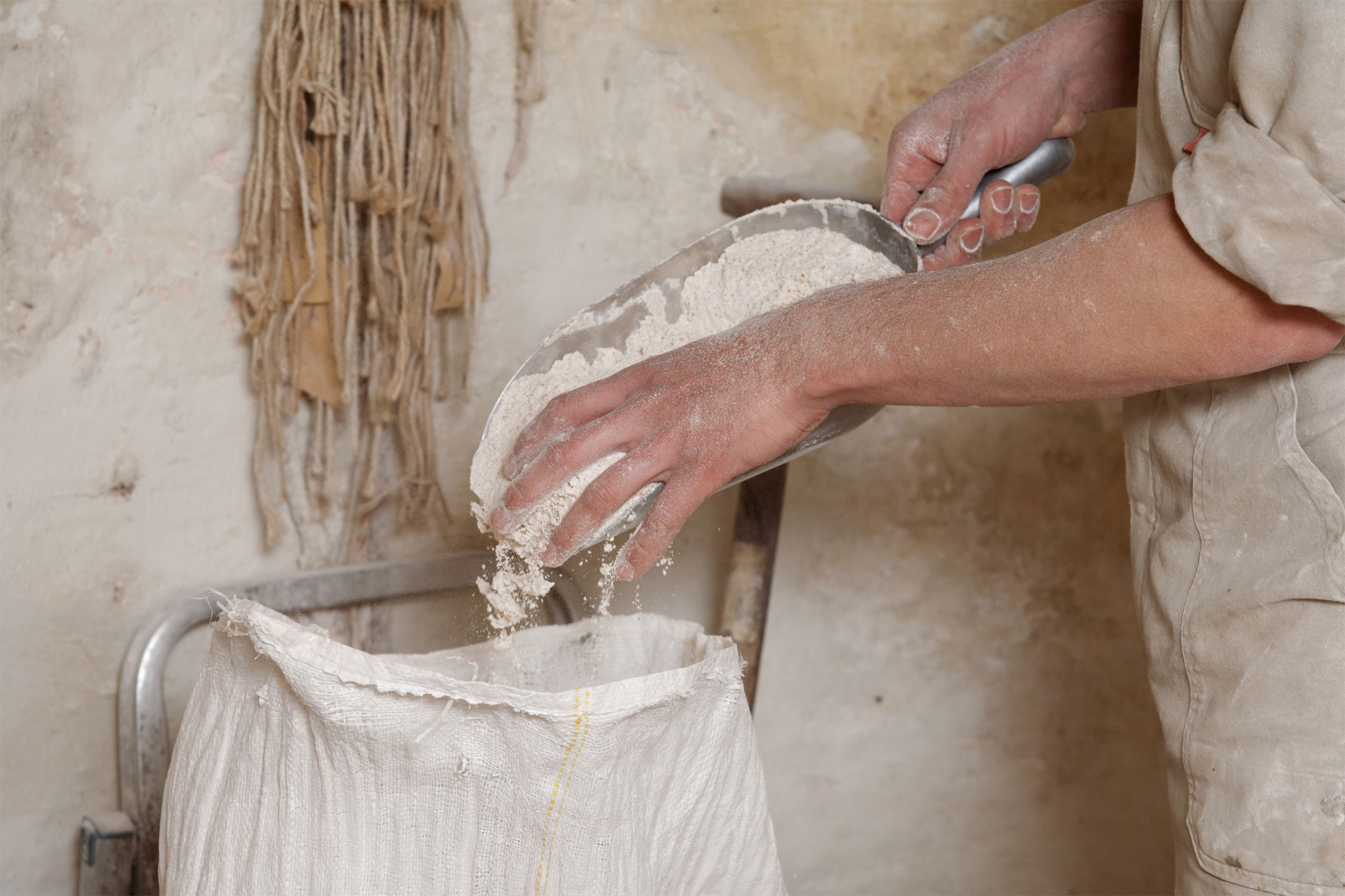It’s not a new thing. miller’s flours are a centuries-old tradition. However, technological progress in recent decades has almost made the noble miller disappear from the map. Almost. Fortunately, there are those who resist and insist on doing things how they used to be done.
Milling is done with a pair of stone grindstones, operated – of course – by the specialist: the miller. The top grindstone is the one that rotates and exerts all the pressure on the cereal grains. The bottom grindstone is watertight and serves as the base for grinding. This is where the expression “being on the top grindstone” or “being on the bottom grindstone” comes from. Well, let’s hear from someone who understands it better.
“Industrial flour plants can produce larger quantities, but we do it the old-fashioned way, with techniques in which the parts of the grain are not separated or processed at the speed and temperature used in industrial processes,” says Paulo Horta, miller in charge of Farinhas Paulino Horta, in Alenquer, a family business with three centuries of tradition.
Endosperm, bran and germ are the constituent parts of each cereal grain. The endosperm occupies 80 to 90% of the grain’s volume and contains most of the starch and proteins. The bran and germ, on the other hand, are extremely rich in fibre, antioxidant compounds, vitamins and minerals. All these nutrients are lost in the refining process used for whiter flours. Paulino Horta flours are different.
The use of a stone grindstone guarantees the most favourable temperature and speed for the grain. In this way, its components remain together for longer during milling, conserving nutrients. “Flavours come from nutrients and we promote this in the flours we produce. Each of our flours is unique. They have different personalities depending on the time we give them, and that will also make them give us different flavours,” explains the miller.
The miller’s flours of Paulino Horta are the basis of all the bakery and pastry products produced by A Padaria Portuguesa. What is the result of this? Bread and cakes with more flavour and also healthier, thanks to the richness and nutritional variety of these flours, which contribute to better digestive health.

